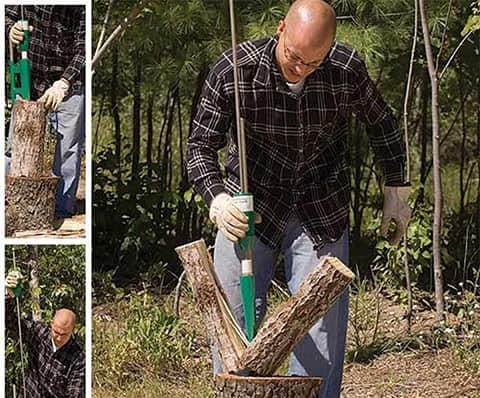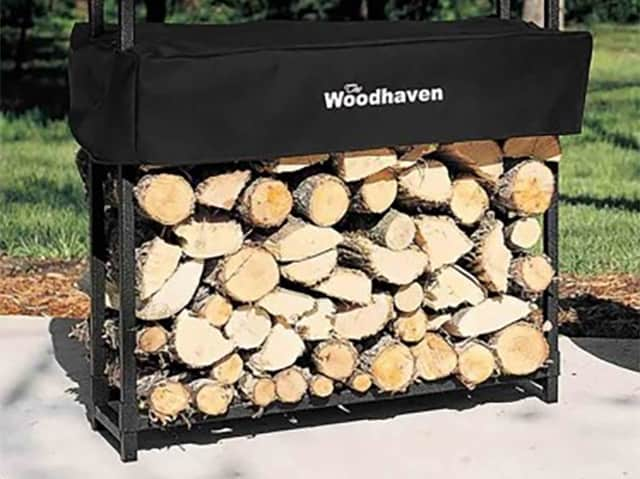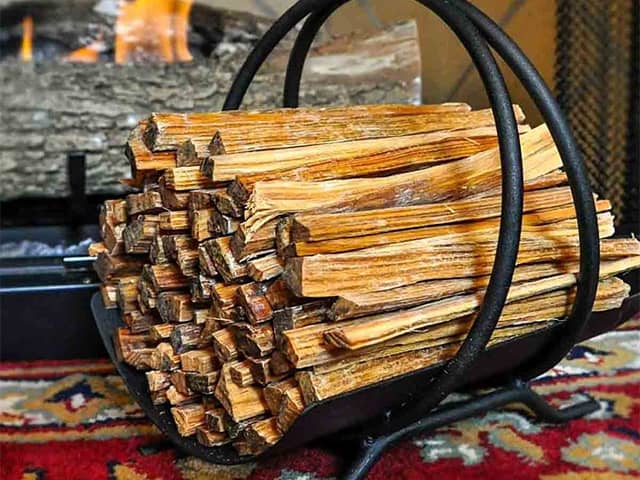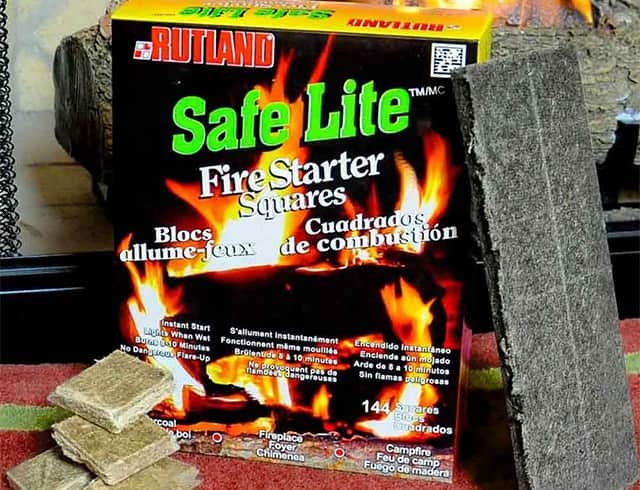Jun 18th 2020
How to Select and Store Firewood
Selecting Your Firewood:
The idea behind producing good firewood begins before you even make your first cut. Begin by finding a type of wood in your area that is plentiful. Many people think they have to burn "hardwood" like Oak or Maple but that is not really the case. Any type of wood will work and for the reason of conservation I believe that whatever is most plentiful in your area will make the best firewood. The problem with firewood that contains a lot of sap is that it can be messy to work with and even cause creosote to build up in your chimney's flue requiring more frequent cleaning. The bottom line is that even in areas were all you find is softwood like pine they still manage to burn wood as a heat source just fine. So don't worry about searching for that one and only Oak tree in your woods, use what is most readily available.
Splitting Your Firewood:
When cutting firewood you should keep the size of your fireplace in mind. Cutting wood too long can create a real headache when it comes time to load the fireplace. The average size for firewood is between 14" and 18" long but use your best judgment. If your fireplace is huge you may want to keep in mind that at one point or another you will be carrying this firewood around so don't go too crazy with log size. Once your firewood is cut it needs to be split. This can be done right away or later on but generally the more dry the firewood is the easier it is to split. Splitting your firewood can be a big chore. There are devices available for those who cannot use an axe or maul as well like our firewood splitter. No matter what tool you decide to use be sure to exercise safety at all times. See our entire selection of log splitters.

Log Splitters
Our fireplace accessories collection includes a large selection of log splitters ranging from 12 pound handheld log splitters to full size electric log splitters that can cut up to 20" logs and professional grade gas powered log splitters.
Shop NowDrying Your Firewood:
The trick to keeping your firewood dry is getting it stacked and off the ground. When you stack firewood you raise it off the ground so that it does not rot but also so that air can travel through it. This air will help to dry the firewood so it can be easily split and burned. Having a good Firewood Rack is essential to producing good firewood. A good firewood rack will keep your firewood up off the ground as well as cover your firewood from rain and snow. You will see that many serious wood burners have several stacks of firewood going at once. Most will use firewood cut from the year before to burn now and cut fresh firewood now so that it is dry and ready to be split and burned for next year.
If you don't have this kind of time or space or if you simply don't have the trees in your area to cut you can generally buy firewood in your local area. Note: For tips on buying firewood see our Firewood Buying Guide. Typically when you buy firewood you buy it already dry and ready to split or sometimes it comes already split and ready to stack. Either way the wood should be stacked and covered as soon as possible. Firewood that is left on the ground in a pile will not only rot but it will attract all sorts of bugs, insects, and rodents. In most areas it is against local ordinances to leave firewood un-stacked. See our entire selection of firewood racks.

Firewood Racks
Keep your firewood high and dry with one of our firewood racks. Firewood racks are essential fireplace accessories that keep insects and rodents out of your wood and protect your firewood from rot.
Shop NowKindling:
Kindling is smaller, thinner pieces of dry firewood designed to help you start your fire. Kindling can be anything from small twigs and branches to splinters of wood cut from your dried firewood. The problem with making kindling out of firewood is that it can be difficult, dangerous and time consuming. It requires good hand-eye coordination and a sharp axe. If you would like something much easier try Fatwood. I like to use fatwood as kindling to start my fires because it burns longer and hotter than regular kindling. Also I don't have to go looking for small pieces of firewood when I'm ready to start a fire I just take a dozen sticks or so out of my Fatwood Caddy and I'm ready to go. Kindling is an essential part of starting a fire and probably one of the most overlooked steps by beginners.

Fatwood
No fireplace accessories collection should be without a fatwood fire starter. Fatwood is cut from pine stumps that are left behind after logging.
Shop NowStarting a Fire:
Please keep in mind that there are more than one way to start a fire. This is simply the way that I feel works best for me. The key components to starting a fire include a source of ignition, dry kindling, dry firewood, and a good draft. To start, take your kindling (again I prefer Fatwood due to its burn properties) and stack it in the form of a log cabin. This will leave a space in the center of your log cabin for newspaper or a Fire Starter. Next check your flue for a proper draft. Do this by starting a piece of newspaper on fire and holding it in the fireplace. If the smoke from the paper is coming down and out of the fireplace hold the paper as high up the flue as you can and let it burn (this can be slightly dangerous if you can't see the paper burning and I would highly recommend the use of a set of good Fireplace Gloves). Repeat this step until the smoke from the paper goes up the flue (this is also known as warming the flue). Now place a piece of newspaper or a fire starter in the center of the log cabin and ignite. Once the kindling ignites and begins to burn place your dry firewood on top of the kindling being sure to leave space between logs for the fire to breath. The key here is not to smother the fire with logs, I usually start with two or three logs. Once the logs ignite you can add whatever you need. See our entire selection of fire starters.

Fire Starters
Keep a supply of fire starters and matches on hand in your fireplace accessories collection to get a roaring fire going in minutes!
Shop Now
